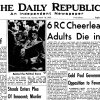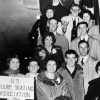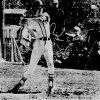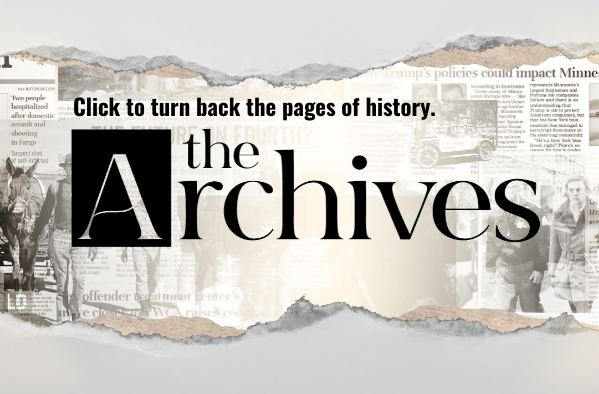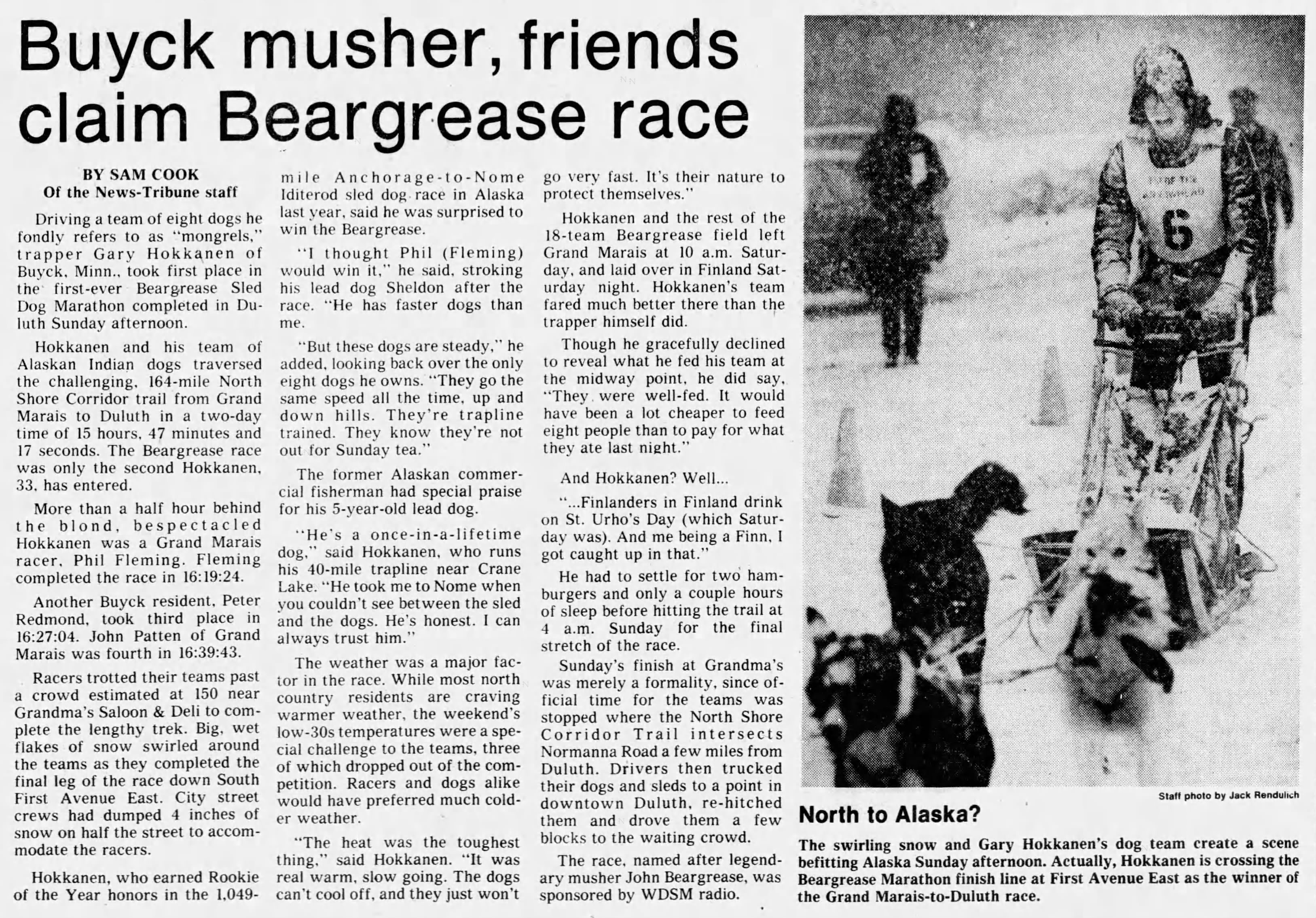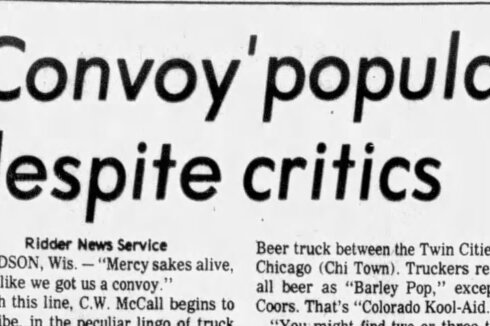DULUTH — This year’s running of the John Beargrease Sled Dog Marathon certainly isn’t the first time the event has been delayed or canceled. A twist of fate almost 130 years ago perhaps made the famous Grand Portage to Duluth race possible in the first place.
You see, Beargrease, in 1896, was believed to be dead after he and his boating companion, A.H. Wagner, failed to reach Two Harbors around Thanksgiving while hauling mail. The Duluth News Tribune reported on Dec. 6 of that year that N.A. Braudo, an explorer, by chance bumped into Beargrease’s brother Peter at an early December dinner where he was told the boaters did in fact finally arrive.
ADVERTISEMENT
“The missing men returned home all right after a perilous experience of several days,” the article read , relaying Braudo’s information. “Their boat was blown across the lake to the south shore and they had to make the best of a very bad situation until the weather got settled so they could return.”
Used primarily for mail, Beargrease loaned his loyal dogs to Duluthians Carl M. Johanson and Walter Watrous, who were heading to the Klondike Gold Rush in 1897. Using various modes of transportation, the pair left Duluth near the end of July and arrived in the rush’s epicenter of Dawson City, Yukon, in early October.
Johanson returned to Duluth and lectured on his journey. While there’s no definite word if they struck it rich, Johanson and two other men founded the Alaska Pioneer Mining Co. in 1899.
In the late 1800s, Beargrease’s travels to Grand Marais and Two Harbors were already legendary. As the only mail carrier to serve the area, Beargrease and his team of dogs traversed the route at least once a week, often completing it in 28 hours. By the fall of 1889, Beargrease, then believed to be in his early 40s, made his final deliveries.
“John must have been blessed with as many lives as a cat for he invariably would show up with the mail on time,” said a 1924 recollection story in the Duluth News Tribune . “When asked about the weather, he would say, ‘No very bad, canoe, she come all right, fair wind.’ ”
Peter A. Black took over the mail route, despite having a $50 higher bid than two other parties . By using a stagecoach, passengers could join Black on the trip.
Oscar and Martin Beckman would take over the route a few years later, using horses and sledge wagons during the winter months. In the summer, mail was delivered by boat.
ADVERTISEMENT
By many accounts, Beargrease lived a simple life in retirement, sleeping and eating in a tent at the edge of Two Harbors, a 1907 article stated .
He made news again in 1907 when one of his many children underwent surgery for tuberculosis. In the winter of 1908, Beargrease pleaded guilty to a charge of drunkenness in municipal court and was fined $3 and costs, a sentence later suspended.
Beargrease died in 1910 in his early 50s.
Seven decades later, the first running of the Beargrease took place. Sponsored by WDSM Radio, the 200-mile race had a $1,000 cash purse and various prizes for the top finishers. It would be the longest race in the lower 48 states.
Gary Kokkanen of Buyck, Minnesota, didn’t consider himself the favorite for the March 15, 1980, inaugural run. Named rookie of the year for the 1979 Iditarod, Kokkanen believed Phil Fleming, of Grand Marais, had faster dogs.
Eighteen teams signed up, and conditions were not ideal. The Duluth News Tribune reporter covering the race wrote a “magnum force wind hurled off the lake,” but temperatures were milder than expected.
“It’s too darn hot for the dogs!” Hokkanen said, saying temps below zero are prime conditions for the team.
ADVERTISEMENT
And the mild temperatures had organizers scrambling for a proper finish. A lack of snow in Duluth kept mushers from going the full distance to Grandma’s Saloon & Deli. Just before the finish, plans were made to have the teams transported by truck for five miles before running the last mile.
Hokkanen and his eight dogs won the first Beargrease in 15 hours, 47 minutes and 17 seconds. Fleming was second, about 27 minutes behind the winner.
The Beargrease increased the purse to $5,000 the next year, but that race was called off due to lack of snow. However, on March 9, 1981, the News Tribune reported that John Patten and Butch Hassler would mush from Duluth to Grand Marais to deliver 500 commemorative letters, all purchased in support of the race.
In 2005, the marathon board voted to move the event to January, citing a better chance of weather conditions and increased sponsor support and participation.




